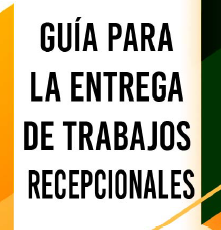Mostrar el registro sencillo del ítem
English-Spanish traslations of two chapters fron the book " Hitler, Triumphant" by Matthew Moses, an analysis of the procedures employed.
| dc.contributor.author | Osorio Arana, Wendy del Rocio | |
| dc.contributor.other | ZANIER VISINTIN, ALESSIO; 219183 | |
| dc.contributor.other | REYES VELAZQUEZ, AMPARO | |
| dc.date.accessioned | 2024-05-27T16:12:20Z | |
| dc.date.available | 2024-05-27T16:12:20Z | |
| dc.date.issued | 2015 | |
| dc.identifier.uri | http://hdl.handle.net/20.500.12249/4226 | |
| dc.description.abstract | During centuries mankind has been looking for a way to communicate with one and other. A way to exchange ideas and thoughts, but it was not easy at all since many languages and dialects surround them. They need to find a way to talk between them. People who can understand both languages. Here it is when translators took an important place in history. This fascinating profession is known as translation and it is the term for turning words from one language into their equivalents in another tongue. (Finks, 1997). What we did not know at that time is that this little job would change the history course; translation makes us interact with people from the other side of the world, to know their customs, their traditions and their own history. Our curiosity guide us to do things that seems impossible. Nowadays, translation still being an important tool for business, for book authors, for anyone. Beyond all this cultural enhancement, translation is very essential to anybody in order to acquire knowledge, to expand our expectations, to know how people think and learn how to interact with them, to know more about our world and the multiculturalism around us. | |
| dc.description.provenance | Submitted by Yeni Martin Cahum (yenimartin@uqroo.edu.mx) on 2024-05-27T16:11:39Z No. of bitstreams: 1 P306.O11.2015-2115.pdf: 3618595 bytes, checksum: 92284719c4e7ab1a7aa280a9643798e2 (MD5) | |
| dc.description.provenance | Approved for entry into archive by Yeni Martin Cahum (yenimartin@uqroo.edu.mx) on 2024-05-27T16:12:20Z (GMT) No. of bitstreams: 1 P306.O11.2015-2115.pdf: 3618595 bytes, checksum: 92284719c4e7ab1a7aa280a9643798e2 (MD5) | |
| dc.description.provenance | Made available in DSpace on 2024-05-27T16:12:20Z (GMT). No. of bitstreams: 1 P306.O11.2015-2115.pdf: 3618595 bytes, checksum: 92284719c4e7ab1a7aa280a9643798e2 (MD5) Previous issue date: 2015 | |
| dc.format | ||
| dc.language.iso | eng | |
| dc.publisher | Universidad de Quintana Roo | |
| dc.rights.uri | http://creativecommons.org/licenses/by-nc-nd/4.0 | |
| dc.subject | Traducción e interpretación | |
| dc.subject | Inglés -- Estudio y enseñanza | |
| dc.subject.classification | HUMANIDADES Y CIENCIAS DE LA CONDUCTA::LINGÜÍSTICA::LINGÜÍSTICA APLICADA::TRADUCCIÓN | |
| dc.title | English-Spanish traslations of two chapters fron the book " Hitler, Triumphant" by Matthew Moses, an analysis of the procedures employed. | |
| dc.type | Trabajo de grado, licenciatura | |
| dc.type.conacyt | bachelorDegreeWork | |
| dc.description.enky | 2115 | |
| dc.rights.acces | openAccess | |
| dc.identificator | 4||57||5701||570112 | |
| dc.audience | generalPublic | |
| dc.division | Campus Chetumal Bahía | |
| dc.division.sub | División de Ciencias Políticas y Humanidades | |
| dc.division.programa | Lengua Inglesa |
Ficheros en el ítem
Este ítem aparece en la(s) siguiente(s) colección(ones)
-
Licenciatura [2590]





